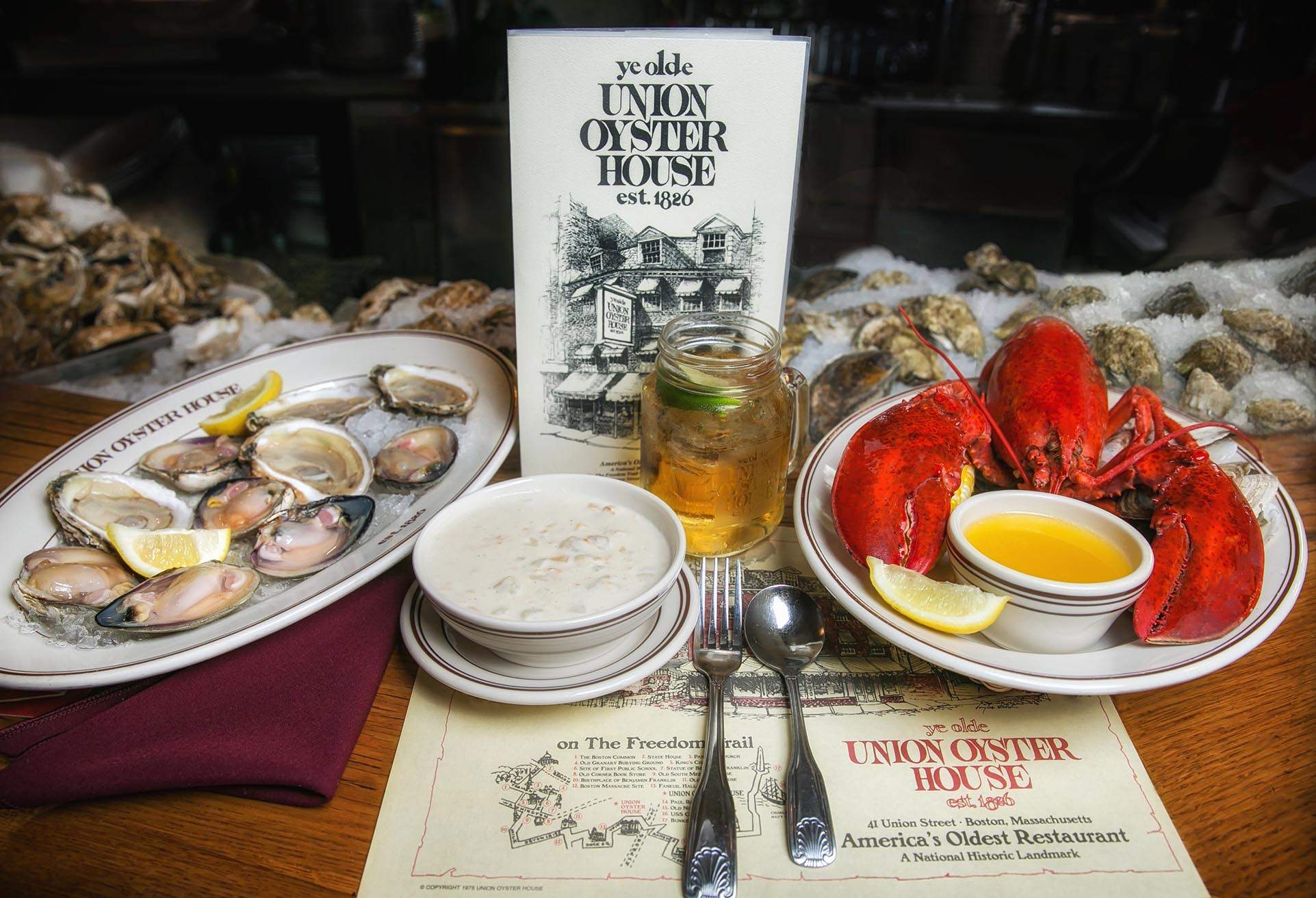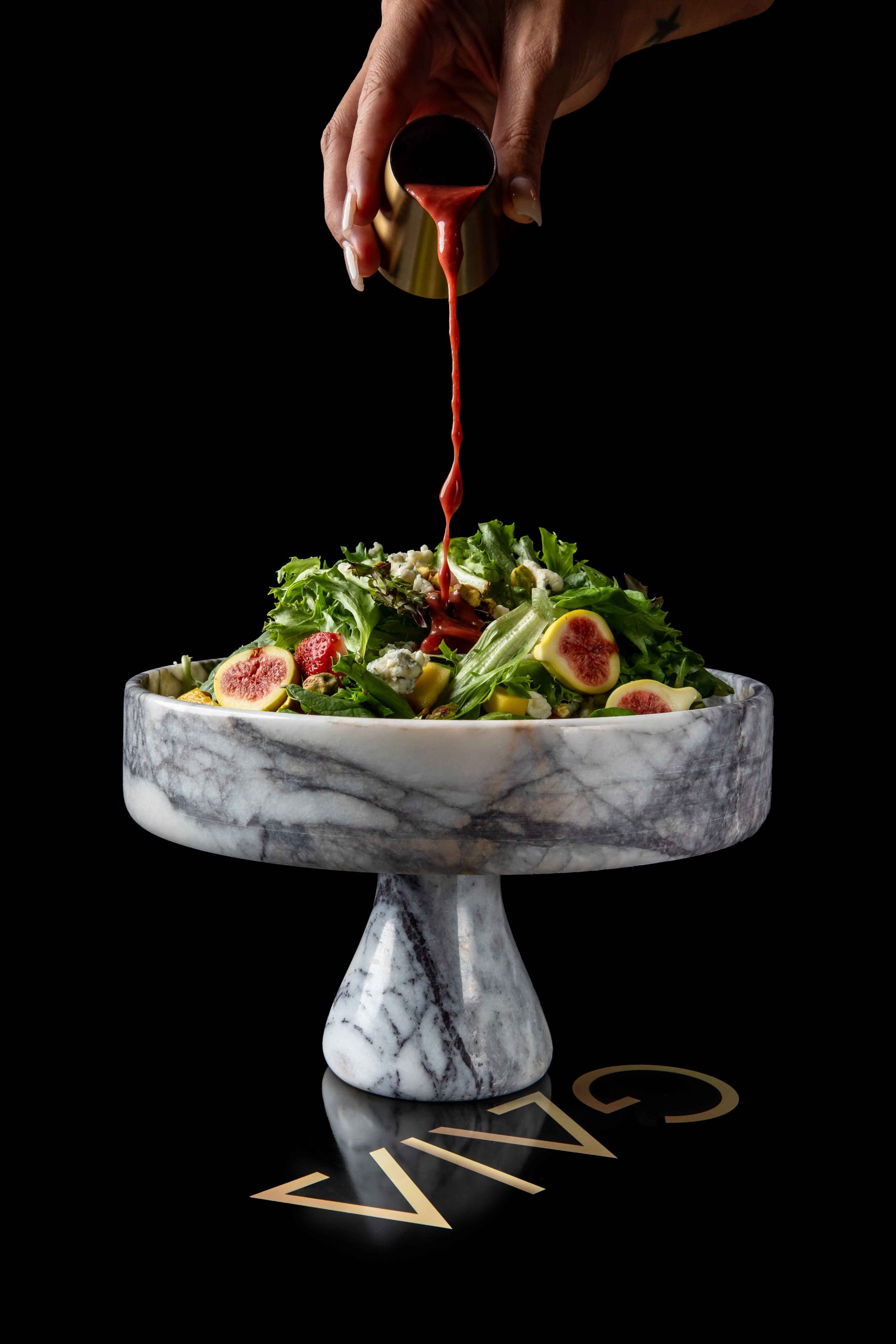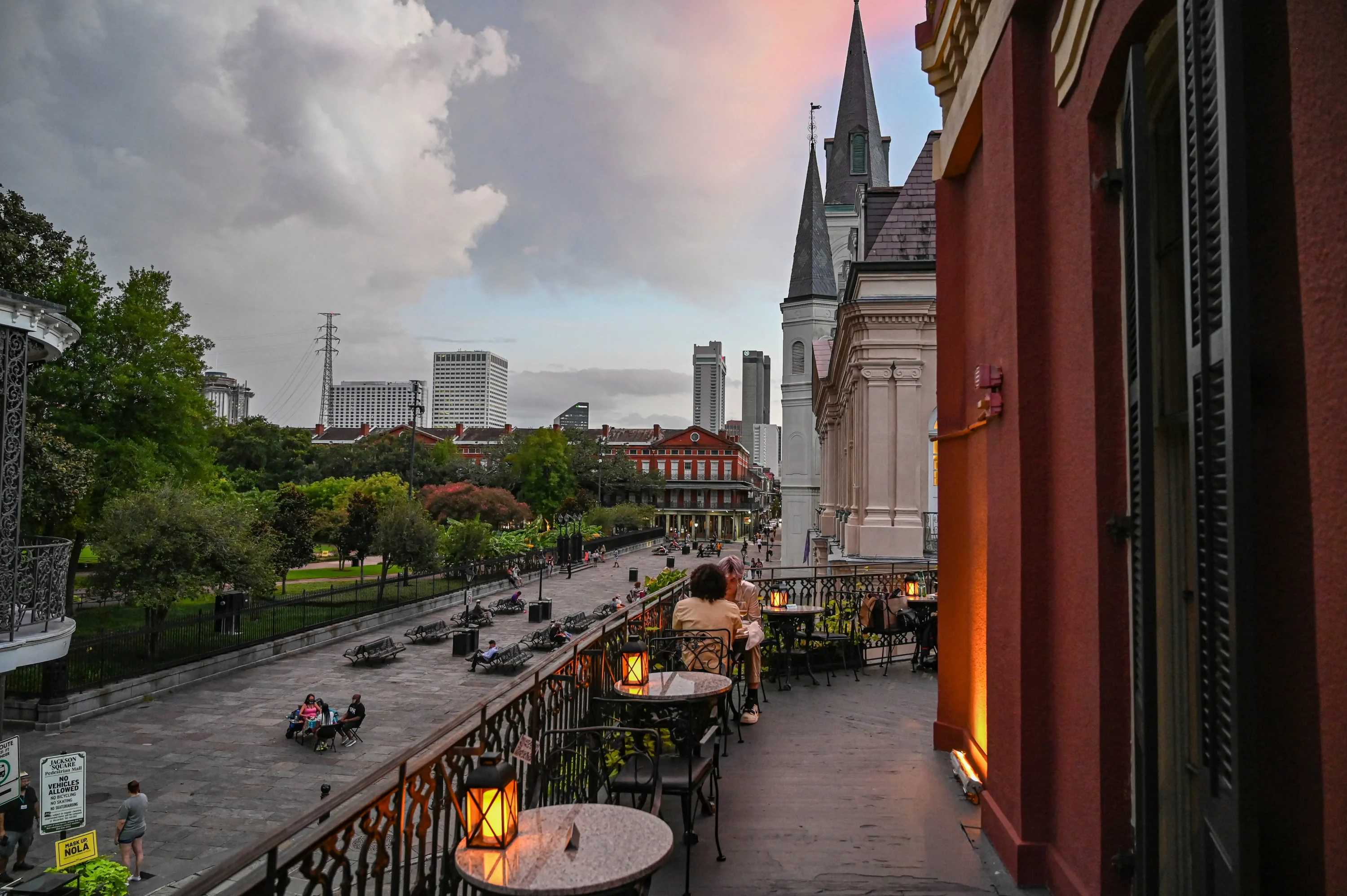During Carnival season, which lasts from Twelfth Night through Mardi Gras Day (January 6 through February 25 this year), New Orleanians can’t get enough of the rib-sticking, crowd-pleasing dishes that fuel long hours of parade watching along St. Charles Avenue and Canal Street — ones like filling seafood gumbo, bananas Foster made tableside, and massive po-boy sandwiches.That kind of joyous celebration, marked by traditional food and drink, marching high school bands, and a swelling sense of neighborhood and city pride, is at the beating heart of what makes the Mardi Gras season so magical. Make your Mardi Gras unforgettable by sampling any — or all — of these iconic New Orleans specialties.
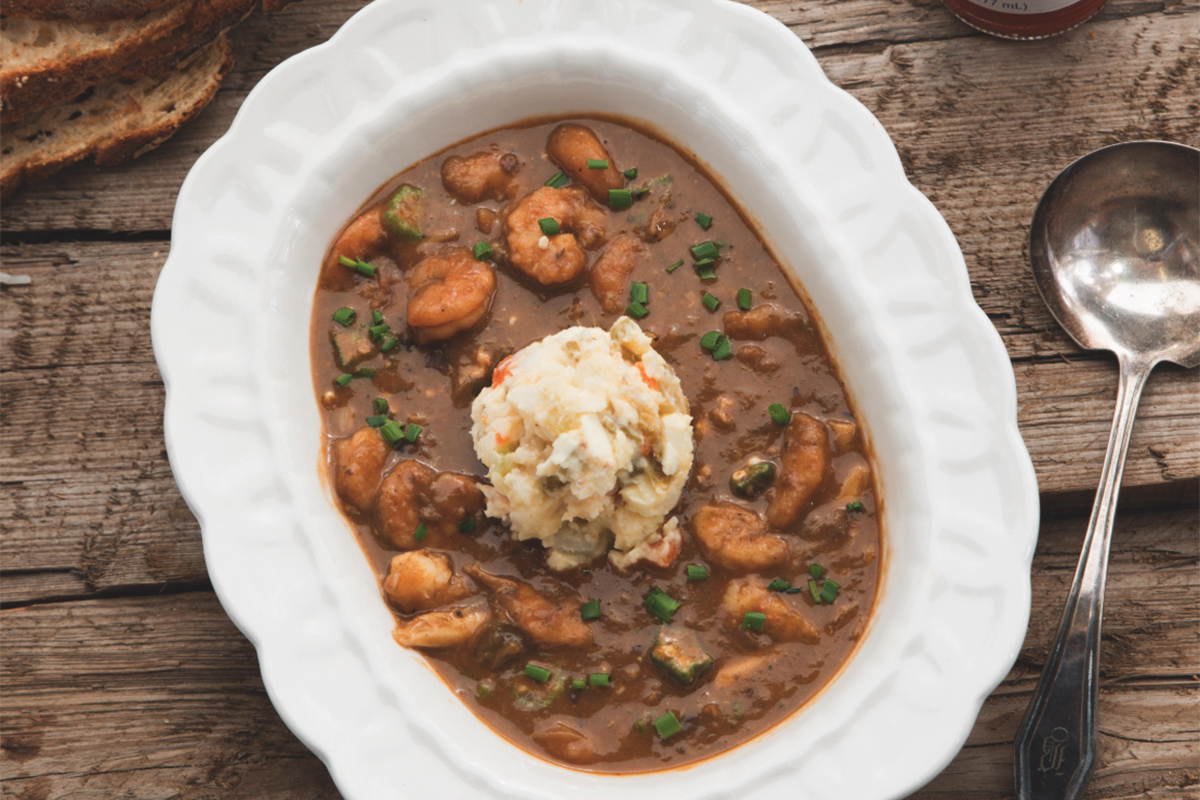
Seafood gumbo
What it is: To most Louisiana locals, gumbo is home cooking, the ultimate comfort food informed by maw-maw’s way of doing things. But thankfully, chefs can satisfy a craving, too, without having to make it yourself. Although sausage and chicken gumbo layered over a mahogany colored roux is always a crowd pleaser, a good seafood gumbo is downright swoon-worthy, especially at GW Fins, where chef-owner Tenney Flynn and executive chef Michael Nelson deliver the freshest seafood in town.
Where to get it: GW Fins in the French Quarter’s seafood gumbo swims with crab, shrimp, and oysters, all from local waters. Served with a scoop of potato salad, Cajun style, this version of gumbo is one of the very best in town. Plus, both Flynn and Nelson are pioneers in seafood sustainability, focusing on using the entire fish in innovative ways — Nelson’s tempura fin wings are one example of how this kitchen walks the walk.
Red beans and rice
What it is: If it’s Monday, there’s red beans and rice on the menu at restaurants all over town, from local joints like Melba’s on Claiborne to the white tablecloth French Quarter bastion Mr. B’s Bistro on Royal. Commonly cooked in both homes and restaurants, this staple simmer of spicy beans and rice traces its roots to the French-speaking Haitians who settled in New Orleans in the 1700s. As for the Monday tradition, the story is that housewives put a pot of beans and a hambone on to simmer while they took care of the family laundry. Thankfully, now no chores are necessary before ordering this ultimate comfort dish.
Where to get it: Opened by Cindy Brennan and her famous restaurant family in 1979, Mr. B’s dishes plenty of signature items, from barbecued shrimp to gumbo Ya Ya (chicken and andouille sausage gumbo) and Creole bread pudding with Irish whiskey sauce. But come Monday, red beans and rice is on the menu — a platter of creamy red beans, topped with a wood grilled boneless pork chop and served with white rice and cornbread.
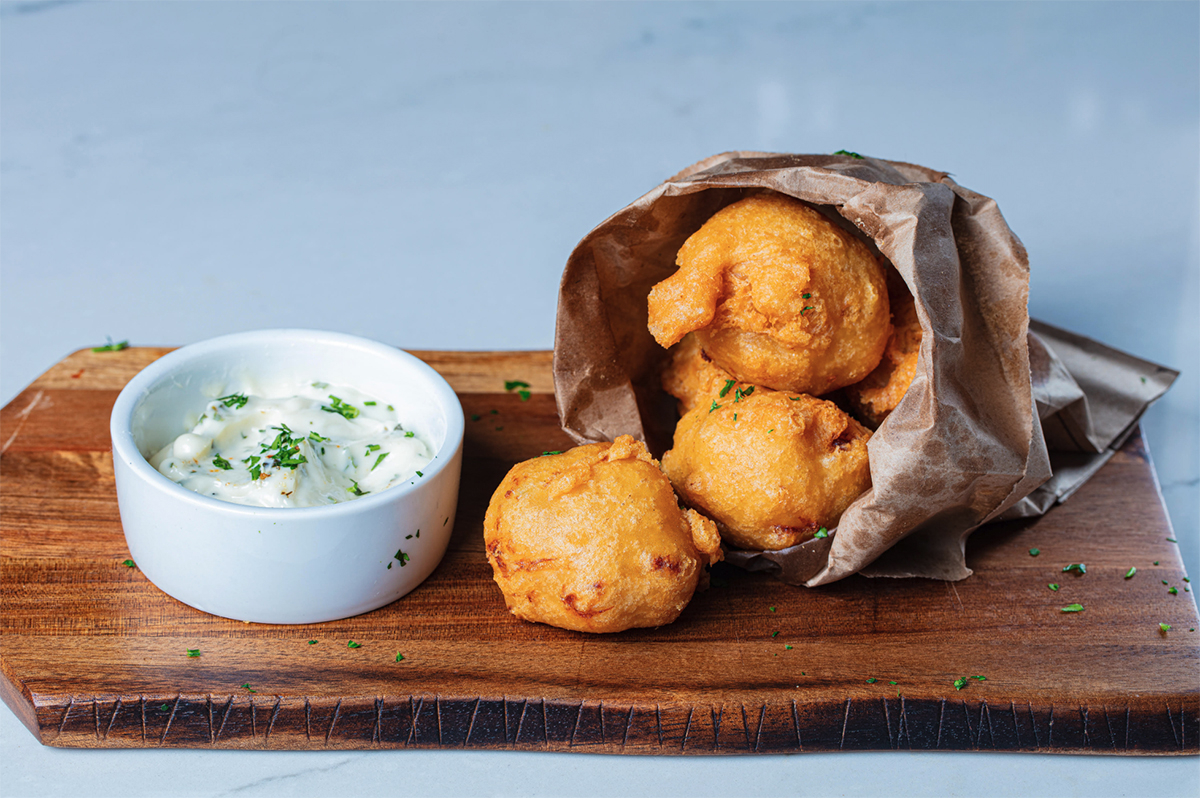
Beignets
What it is: Other cities celebrate doughnuts. In New Orleans, it’s all about the beignet: pillows of dough, hot from the fryer and dusted with powdered sugar, best enjoyed with chicory-laced cafe au lait on the side. While Café du Monde is the go-to for enjoying the sweet treat al fresco by the river, chefs around town continue to stretch beignet boundaries, offering both savory and sweet variations.
Where to get it: At Café Normandie in the Warehouse District — the swell dining experience in the new Higgins Hotel across from the World War II Museum — French chef Virgile Brandel creates rustic French cuisine informed by the New Orleans table. His version of crab beignets is a revelation, light and savory fried dough brimming with creamy Louisiana lump crab meat and served with herb aioli for dipping. Brandel doesn’t stop there, though; his sweet beignet rendition delivers crazy-good warm beignets, along with dark chocolate dipping sauce so good you’ll want to lick the ramekin.
Seafood po’boy
What it is: Po’boys are the patron saint of sandwiches in New Orleans. At the most basic level, they’re massive sandwiches made with shaved meat or seafood, plus lettuce, tomato, pickles, and mayonnaise or Creole mustard. Roast beef versions have a gravy dip. Leidenheimer-branded French bread — a crusty, yet fluffy white roll — are the vehicle for everything from roast beef debris to hot sausage and French fries to the most popular, fried local seafood.
Where to get it: Although Boil Seafood House is best known for its seafood boils, this Magazine street charmer also makes spectacular po-boys. At Boil, it’s about fried oysters, local trout, shrimp, or chicken tenders, with corn fritters, fries, and salad or cole slaw on the side. Do save room for seafood at this Garden District gem, where owner Hieu Doan — aka Captain D — channels his Vietnamese heritage for a focus on Viet-Cajun flavors. First pick a seafood such as crawfish, shrimp, crab, mussels, or clams; then choose a flavor profile from Vietnamese, Cajun, garlic, or Caribbean; and finally select a spice level, from low to extra high — and then get ready to feast.
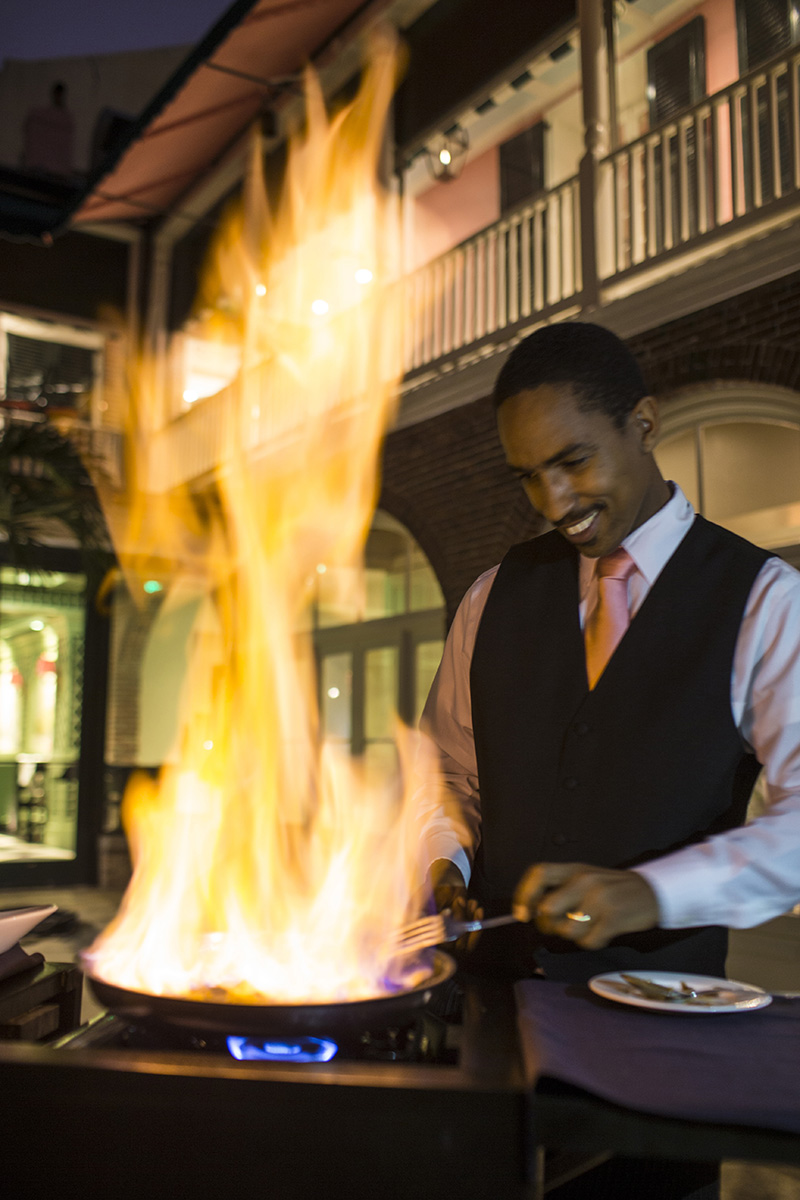
Bananas Foster
What it is: This cinnamon-scented spectacle is made with bananas cooked in a sauce of butter, brown sugar, cinnamon, dark rum, and banana liqueur — of which the latter two typically are ignited tableside. The hot banana mixture is poured over vanilla ice cream for a hot-cold sweet treat. It’s a showstopper of a meal-ender, one that was invented in the early 1950s by restaurateur Owen Brennan.
Where to get it: Brennan’s, the storied French Quarter restaurant that has anchored Creole dining on Royal Street since 1946, underwent a stunning $20 million redo back in 2014, but thankfully some things didn’t change. Restaurateur Ralph Brennan and partner Terry White knew that there was no messing with the bananas Foster. It’s the ideal ending to chef Slade Rushing’s creative take on Brennan’s cuisine including roasted oysters with smoked chili butter and mahi mahi amandine.
Jambalaya
What it is: Louisiana is known for both Cajun and Creole cuisine, two styles of cooking that share French roots and many of the same ingredients. Late renowned chef Paul Prudhomme, born on a farm in the Cajun town of Opelousas, La., pioneered that rustic style of cooking in New Orleans, introducing ingredients like crawfish, Tasso ham, andouille sausage, and red beans to fine dining menus. Jambalaya in New Orleans is a result: Fueled by smoked and spicy Tasso ham, this renowned Louisiana dish includes the Holy Trinity of onions, bell peppers, and celery, along with andouille sausage, nibs of tomato, garlic, and local long-grain rice.
Where to get it: Prudhomme got his start at the famed Commander’s Palace, where he worked before opening his own place, K-Paul’s Louisiana Kitchen in the French Quarter in 1979. Prudhomme’s jambalaya is legend, a classic Cajun dish that is a must-eat for Mardi Gras. At K. Paul’s, it’s topped with fried Louisiana shrimp and served alongside breaded chicken.
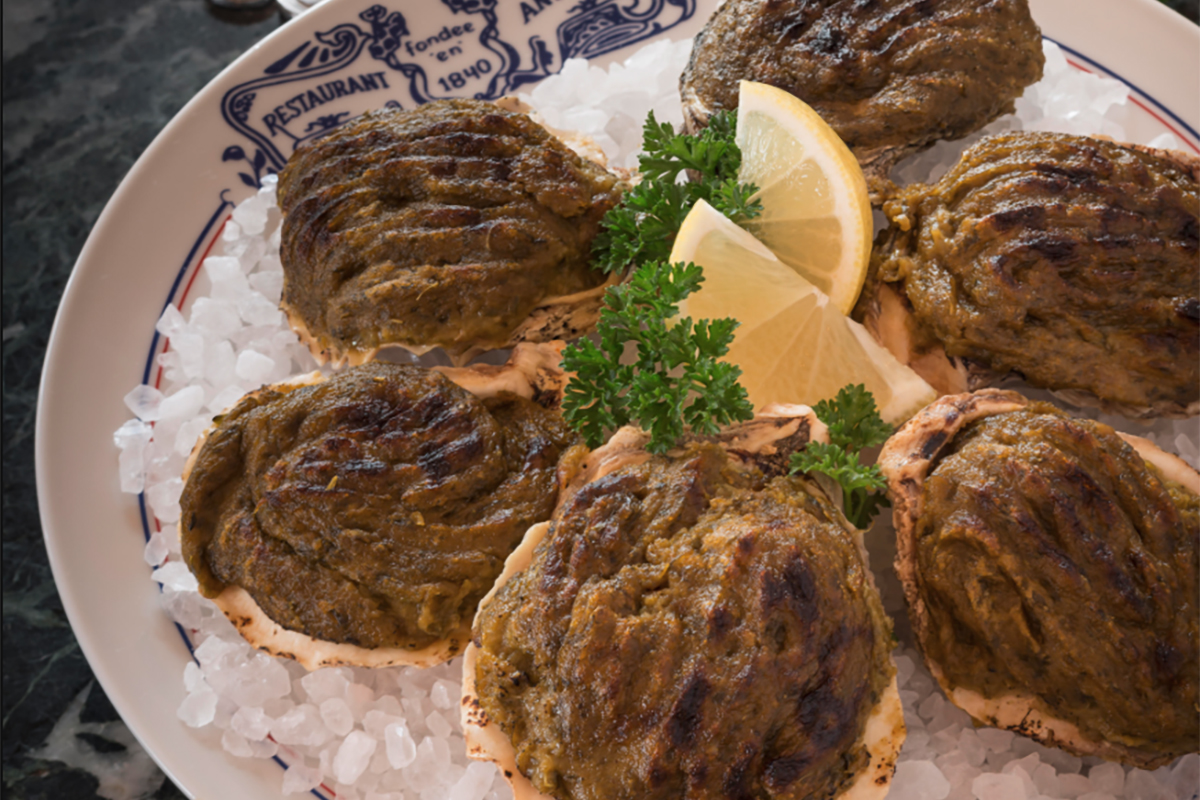
Oysters Rockefeller
What it is: Jules Alciatore, the son of the restaurant’s founder Antoine Alciatore, invented Oysters Rockefeller in 1899. Faced with a shortage of escargot from France, he devised a creative way to serve the always-plentiful Louisiana oyster, combining a savory, buttery sauce with green vegetables and herbs. Proud of the dish’s richness, he named it after mega-wealthy Standard Oil founder John D. Rockefeller.
Where to get it: The oldest continuously operating restaurant in America, Antoine’s in the French Quarter turns 180 this year and is still run by its founding family. As for the recipe for oysters Rockefeller, served to the tune of more than five million since the restaurant opened, that’s a family secret that’s never changing. But contrary to popular belief and the umpteen recipes that say otherwise, the real oysters Rockefeller at Antoine’s doesn’t have a shred of spinach in it.
Barbecue shrimp
What it is: A spicy, peppery simmer of Gulf shrimp in Worcestershire, butter, wine, and hot sauce that is deliciously sloppy to slurp and best mopped up with a crusty pistolette, a local type of bread.
Where to get it: To the rest of the world Emeril Lagasse is a celebrity chef, cookbook author, and creator of a line of specialty seasonings. To New Orleanians, he’s our chef Emeril, the guy who wowed at Commander’s Palace before opening his flagship Emeril’s restaurant in the Warehouse District in 1990, long before the neighborhood became fashionable. Emeril’s, now under the watch of chef de cuisine Douglas Braselman, remains sharply focused. The barbecue shrimp — still the gold standard for this local fave — is one dish that will never leave the menu.
Beth D’Addono is a food and travel writer based in New Orleans. Her latest book is 100 Things to Do in New Orleans Before You Die.

